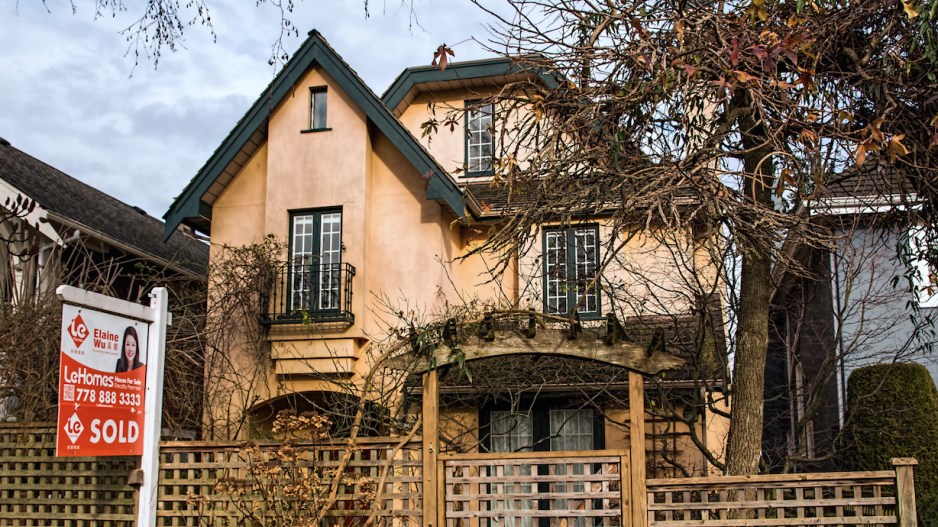Metro Vancouver’s home sellers took the opportunity of the New Year to list their properties, with new listings in the region up 244.6% month over month, and nearly 28% higher than the same month last year.
The latest monthly stats from the Real Estate Board of Greater Vancouver, released February 4, revealed that the sales-to-active-listings ratio in the region is now just 10.2% across all property types, putting it firmly into a buyer’s market.
The total number of homes listed for sale in Metro Vancouver as of the end of January is 10,808, up 55.6% over January 2018 and up 5.2% compared with December.
While sellers were making their play, buyers did not seem to be responding. There were 1,103 Metro Vancouver home sales in January, which is a 39.3% decline from the 1,818 sales recorded in January 2018, and a 2.9% increase from the 1,072 homes sold in December. The January sales total was 36.3% below the 10-year average for January and the lowest January total since 2009.
January’s sales performance, while weak, hints at an improvement compared with the 2018 full-year total, which was the lowest in 18 years.
(Story continues below.)
Infogram
REBGV president Phil Moore expressed a note of cautious optimism, stating, “Realtors are seeing more traffic at open houses compared to recent months – however, buyers are choosing to remain in a holding pattern for the time being.”
He added, “Economic fundamentals underpinning our market for home buyers and sellers remain strong. Today’s market conditions are largely the result of the mortgage stress test that the federal government imposed at the beginning of last year.”
As ever, the level of market strength or weakness varies between each property type. The sales-to-listings ratio is currently 6.8% for detached homes (very much a buyer’s market), 11.9% for townhomes (recently turned into a buyer’s market), and 13.6% for condominiums (still a balanced market, but weakening towards a buyer’s market).
The region’s composite benchmark price for all home types combined is currently $1,019,600. This is a 4.5% slide since January 2018, and a drop of 1.2% from December 2018.
Sales and prices by home type and area
There were 339 sales of Metro Vancouver detached homes in January, which is a 30.4% decrease from January 2018 and a drop of 2.6% from December. Now standing at $1,453,400, the benchmark price for a single-family home across the region is 9.1% decrease lower than in January 2018, and a drop of 1.7% in the past month.
As usual, the most severe benchmark price drops in this sector were in West Vancouver (-15.4%) and Vancouver West (-14.1%), where the annual declines are deepening each month, followed by Burnaby North and Richmond (both down 9.7%). The Sunshine Coast (prices up 2.8%) and Bowen Island (+3%) remain the region’s strongest detached markets.
Sales of attached properties such as townhomes, row houses and duplexes fell 35.7% year over year to 205 in January, which is 8.6% higher than the extremely weak December. The benchmark price of an attached home has risen and then fallen by a near-equal amount over the past 12 months, now virtually flat with January last year, at $800,600 (down 0.5%). This is a 1.1% or $9,100 decrease from December’s benchmark of $809,700.
Typical townhome prices in Ladner and Tsawwassen are dropping year-over-year at an increasing rate, down 4.6 and 4.1% respectively. However, 10 of the 17 areas posted an annual increase in the townhome benchmark price, the highest of these in Pitt Meadows, up 7.4%.
Condo sales in Metro Vancouver totalled 559 in January, which is a significant 44.8% decrease from January 2018, and a rise of 4.5% since December. The benchmark price of a typical condo in the region is $658,600, which is the first time in this cycle that it has posted a year-over-year decline. That price is 1.7% lower than in January 2018, and a 0.8% decrease from December’s $664,100.
Ladner and Tsawwassen, which saw the region’s biggest townhome price declines as well as significant detached price drops, conversely posted the largest annual increases in condo benchmark prices, up 7.4 and 8% respectively. Five other areas – Coquitlam, Port Coquitlam, Maple Ridge, Pitt Meadows and New Westminster – also saw annual condo price increases. The steepest yearly condo price drops were in West Vancouver (-6%) and Whistler (-5.2%).
Home prices vary widely in different areas throughout the region. For full REBGV stats, click here.
Glacier Media Real Estate




